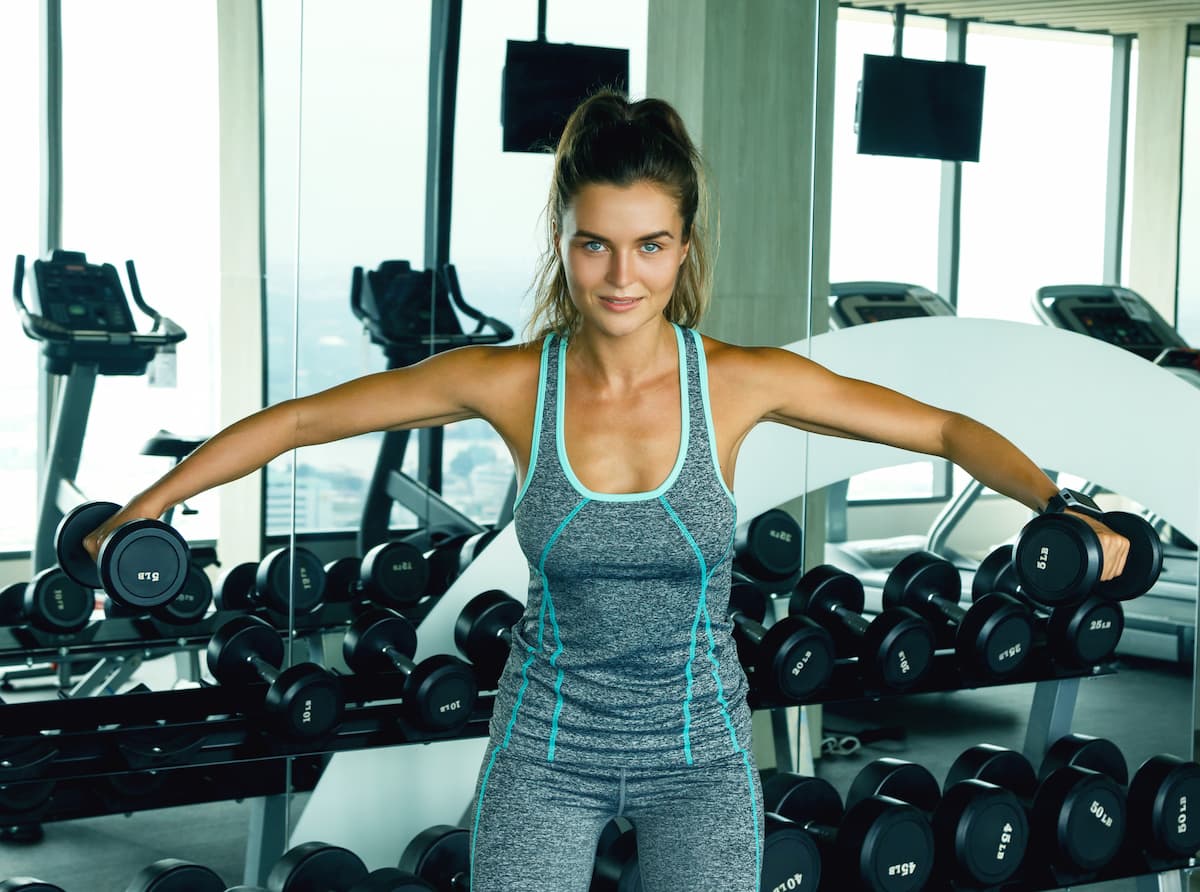In the realm of fitness and body building, everyone desires a strong and sculpted upper body. Achieving that V-shape not only boosts your confidence but also brings functional benefits to everyday life.
With an ample availability of exercises targeting various upper body muscles, shoulder flys stand out as one of the most effective exercises to build upper body strength, especially in the deltoids.
What are Shoulder Flys?
Shoulder flys, often referred to as lateral raises or simply flys, are weightlifting exercises that primarily target the middle deltoids which are responsible for enhancing overall shoulder functionality and appearance. Although mainly associated with dumbbells, other variations include using leverage machines, cables, or kettlebells.
This compound movement engages several muscle groups besides the middle deltoids, such as chest, core, and lats, making it an essential part of any workout routine.
The Fundamentals of Performing a Shoulder Fly
Select the Right Weight
Before diving into the execution of shoulder flys, remember the importance of choosing an appropriate weight. Avoid starting with heavy weights; instead, begin with a light dumbbell and progressively increase the load.
The key is to find a balance between challenging yourself without compromising form or risking injury.
Proper Setup
- Stand with feet hip-width apart while holding a dumbbell in each hand.
- Ensure that palms face inwards towards your thighs.
- Relax your shoulders and engage your core for stability.
Execution
- Slightly bend your elbows and tighten the muscles around your shoulder blades for support.
- Maintaining a controlled motion, raise your arms laterally away from your body until they reach shoulder height.
- Focusing on the contraction of your middle deltoids, pause at the top for one second before slowly lowering the dumbbells to the starting position.
- Repeat for the desired number of repetitions and sets.
Note: Throughout the exercise, keep the chest up, back straight, and avoid overextension or swinging the weights as this may cause injury.
Variations and Alternatives to Shoulder Flys
To maximize the benefits of a workout, incorporating different variations and alternative movements is highly recommended. Here are some popular choices for targeting deltoids through fly exercises:
Rear Delt Flys
Primarily focusing on the medial deltoid region, rear delt flys can be performed in a bent-over position, seated with a hinge motion, or using an adjustable bench.
These exercises provide support for the shoulder joint and improve overall stability.
Neutral-Grip Incline Dumbbell Flys
This variation targets both the medial and posterior deltoids and adds emphasis on the upper back muscles. Sit down on an incline bench and hold the dumbbells with a neutral grip (palms facing each other).
Slowly raise your arms out to the sides while keeping your elbows slightly bent, then return them to the original position.
Cable and Machine Flys
Performing shoulder flys using cables or machines allows for more consistent resistance throughout the range of motion. Some options include the machine reverse fly targeting rear delt muscles, and dumbbell shoulder lateral flys using a cable for added resistance.
Accessory Exercises and Combinations
In addition to shoulder fly variations, performing a mix of accessory exercises is an effective way to build balanced muscle strength. Here are some exercise combinations reflecting this approach:
- Dumbbell shoulder press: When paired with flys, these offer increased development in the middle deltoid region and overall shoulder stability.
- Bent-over flys workout: This combination serves as an ideal pairing with upright shoulder flys, leading to well-rounded growth in muscle strength and stamina.
- Xenith’s fly football shoulder pad: Diversify your shoulder training with various sport-specific movements and intensities.
Tips for Effective Shoulder Fly Performance
- Maintain proper form throughout the full range of motion.
- Select appropriate weights to avoid risks of fatigue, injuries, or poor technique.
- Warm up before exercising and stretch after completing your workout session.
- Incorporate different variations and alternative movements to keep the routine engaging and productive.
- Do not neglect other upper body muscles while focusing on shoulders alone – adopt a comprehensive, balanced approach.
Overall, mastering the art of shoulder flys and their variations can be an excellent gateway to achieving that desired sculpted upper body appearance, all while enhancing functional benefits in day-to-day life.
Remember to maintain proper form, select suitable weights, warm up, and incorporate alternative exercises to make this journey safe and fruitful.

